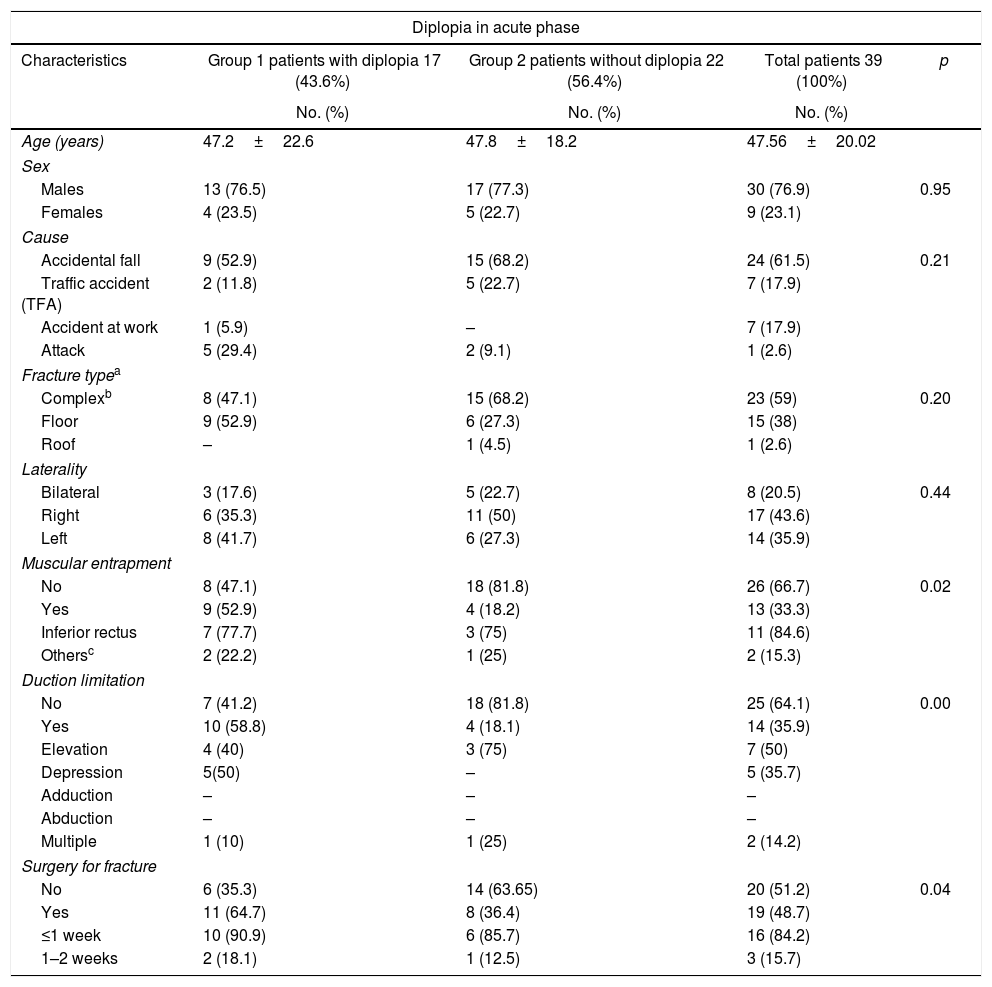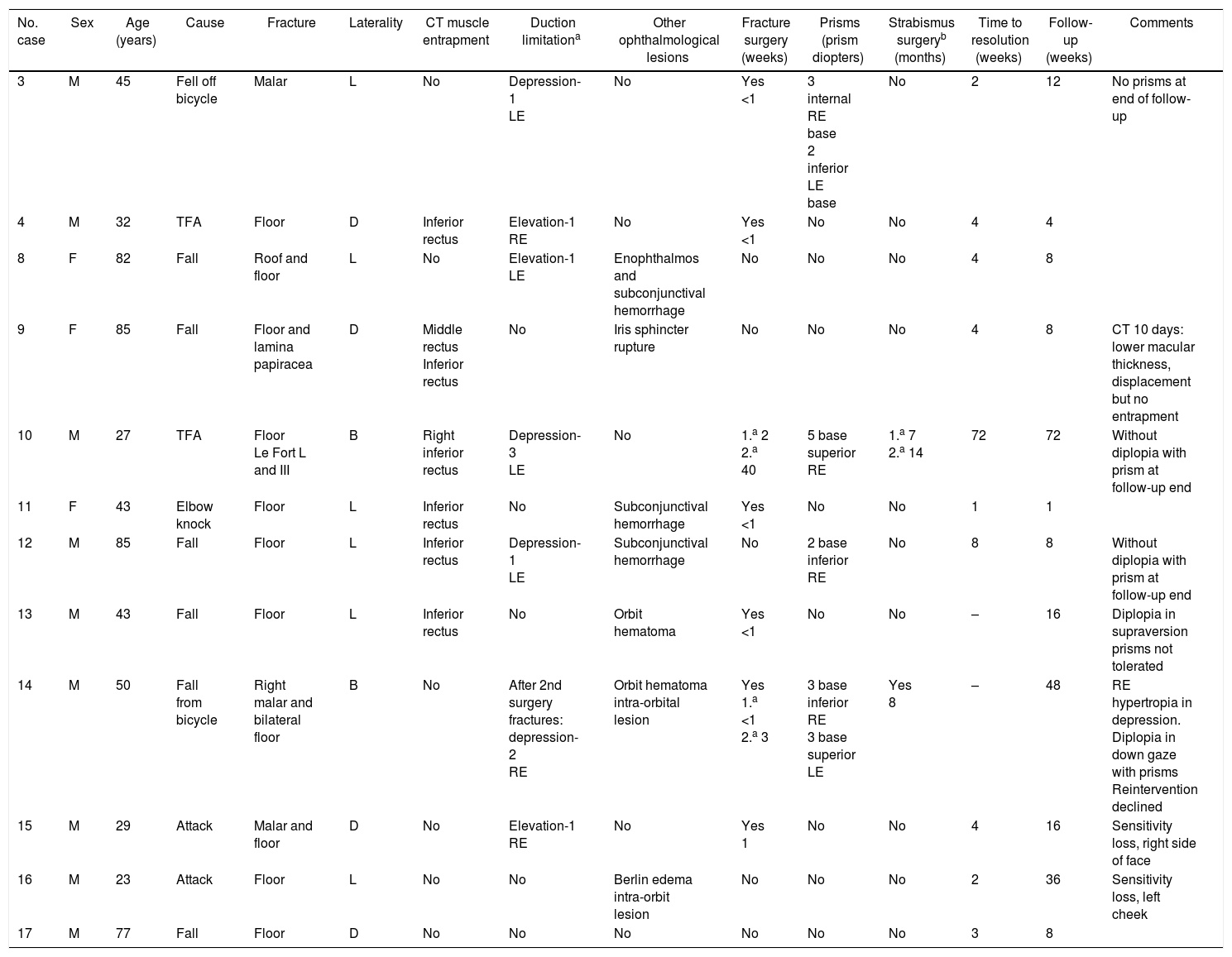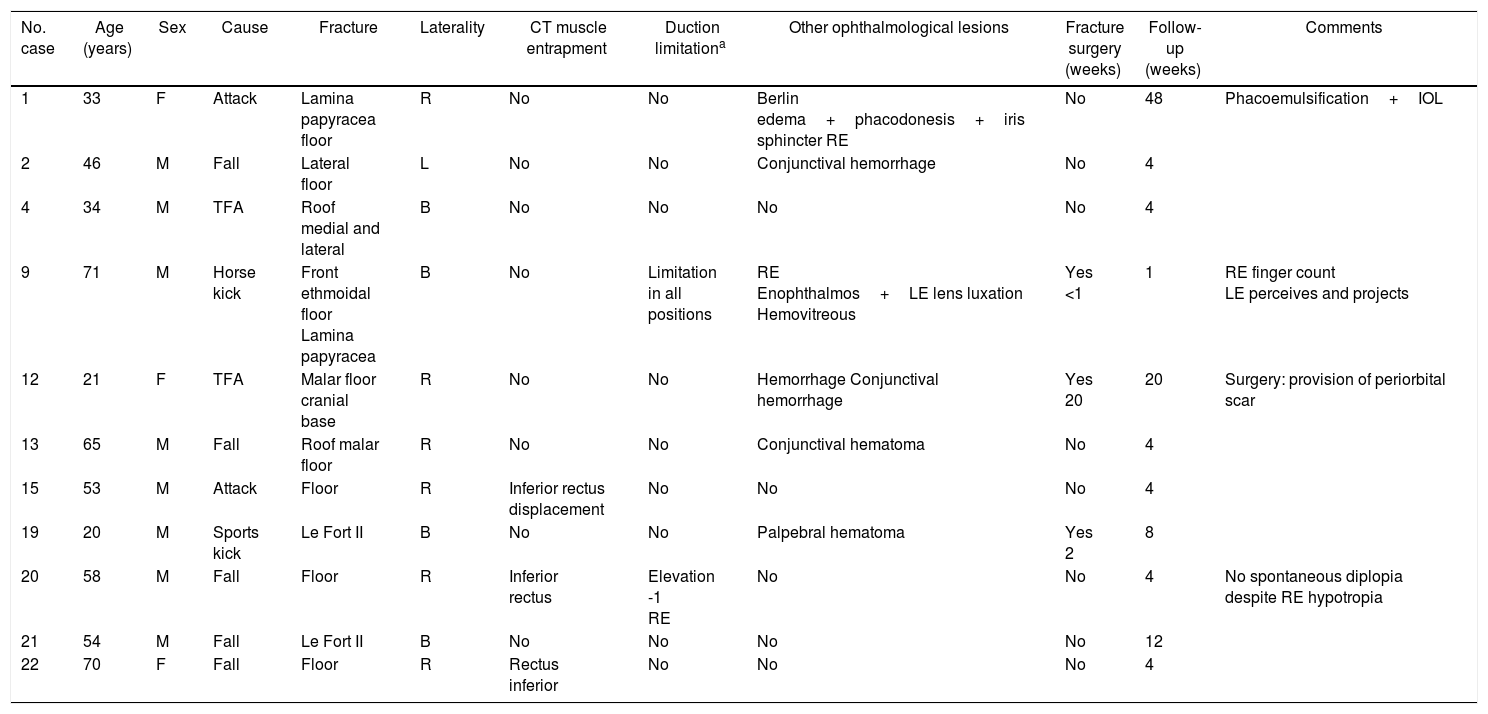To evaluate the incidence and evolution of diplopia as a complication of orbital fractures in adults.
Patients and methodsA review was conducted on medical records of all consecutive adults with orbital fracture referred between January 2014 and December 2015. An analysis was made of the incidence of diplopia secondary to fracture in the acute phase and its evolution. A descriptive study was performed on the variables related to patients, fractures, and fracture and diplopia treatment.
ResultsThe study included 39 patients with a mean age of 48 years (17–85). Of all the patients, 17 (43.6%) presented with diplopia in the acute phase. Differences were found between the groups with and without diplopia in relation to muscle entrapment diagnosed by orbital computed tomography, duction limitation, and fracture surgery ≤1 week (p=0.02, p=0.00, p=0.04, respectively). Out of the 17 patients with diplopia, 12 had a mean follow-up of 18 weeks (1–72), and in 10 (83.3%) diplopia was resolved in a mean time of 10 weeks (1–72). There were spontaneous resolution in 4 (33.3%) patients, and resolution after fracture surgery in 4 (57%) of the 7 that underwent surgery. In 4 cases (33.3%) prisms were prescribed, and 2 (16.6%) required strabismus surgery.
ConclusionsDiplopia secondary to orbital fracture in adults is frequent, but it is resolved in most cases spontaneously or after fracture surgery. A few patients will require prisms and/or strabismus surgery.
Evaluar la incidencia y evolución de la diplopía como complicación de las fracturas orbitarias en adultos.
Pacientes y métodosEstudio retrospectivo de los adultos con fractura orbitaria remitidos entre enero de 2014 y diciembre de 2015. Analizamos la incidencia de diplopía secundaria a la fractura en la fase aguda y su evolución. Realizamos un estudio descriptivo de las variables relativas a los pacientes, las fracturas, y el tratamiento de la fractura y de la diplopía.
ResultadosSe estudiaron un total de 39pacientes con edad media de 48años (17-85). Del total, 17 pacientes (43,6%) presentaron diplopía en la fase aguda. Se encontraron diferencias entre los grupos con y sin diplopía para el atrapamiento muscular diagnosticado mediante TC orbitario, la limitación en las ducciones y la cirugía de la fractura ≤1semana (p=0,02; p=0,00; p=0,04, respectivamente). De los 17pacientes con diplopía, 12 tuvieron seguimiento medio de 18semanas (1-72) y de ellos en 10 (83,3%) la diplopía se resolvió en un tiempo medio de 10semanas (1-72). Se produjo resolución espontánea en 4pacientes (33,3%), y resolución tras cirugía de la fractura en 4 (57%) de los 7 que fueron intervenidos. En 4casos (33,3%) se prescribieron prismas, y 2 (16,6%) precisaron cirugía de estrabismo.
ConclusionesLa diplopía secundaria a fractura orbitaria en adultos es frecuente pero se resuelve en la mayoría de los casos espontáneamente o tras cirugía de la fractura; una minoría de pacientes precisarán prismas y/o cirugía de estrabismo.












